Asked
Modified 3 years, 9 months ago
Viewed 440k times
I* hit a curb and got a small tear in the front passenger side tire. The tear is about 1" long and goes mostly across the surface of the tire but also a little bit, maybe 1/4", toward the inside of the tire. If this is beyond cosmetic and not repairable, I'll of course replace the tire. But these tires only have about 3000 miles on them and to my uneducated eyes, this area of the tire looks like a rubber ridge designed for style or rim protection rather than structure. Not that the rim protection worked!
These are BF Goodrich Advantage T/A tires, size 225/50R17, in case that matters.
* OK, it was my wife driving at the time, but I'd never blame her in public!
1
The damage you are showing is minor cosmetic damage.
If the following occurs with sidewall damage, then get it replaced:
If you aren't seeing any of these things, you should not have any issues running your tire until the tread wears out (normal use).
As a side note (and primarily my opinion with nothing to really back it up), the area where your damage has occurred seems to be extra rubber put in place on low profile tires to help protect the rims from curb rash. Yours looks like it was a little more serious of a curb encounter, but still, if no issues as stated above, you should be fine.
EDIT: If the flap of rubber sticking out bothers you (aesthetically), use a small amount of rubber cement to it and it should keep it in place.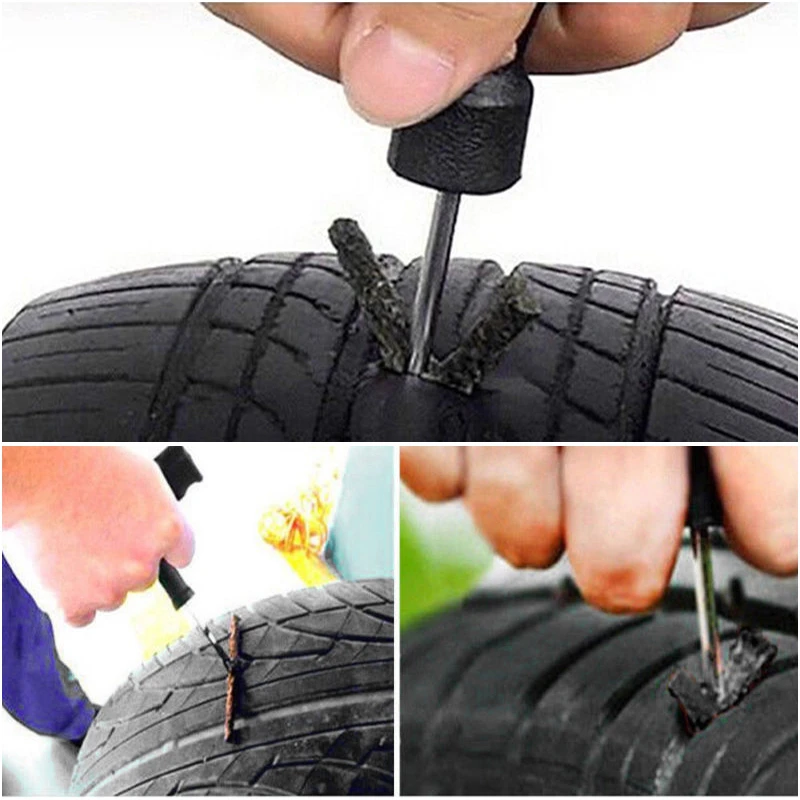 It really isn't bothering anything the way it is.
It really isn't bothering anything the way it is.
2
If you decide to keep driving on this tire, don't use superglue on that rubber flap. When superglue sets it becomes rigid and brittle. The tire will flex a bit when you drive, and break the glue bond in a short time.
Instead, use the rubber glue from a bike tire puncture repair kit.
this area of the tire looks like a rubber ridge designed for style
Wrong, This part of the tyre protects sharp objects from getting into the inner more structural parts of the tyre.
The damage to your tyre does not seem too critical to cause any immediate change to driving or safety.
That said if any sharp objects hit the wall in this particular area it will be a problem , I would say , use them for another 5k miles and replace them just to be sure. I had a similar wear on my tyre and they held good for a long time but its just me, since they were practically new.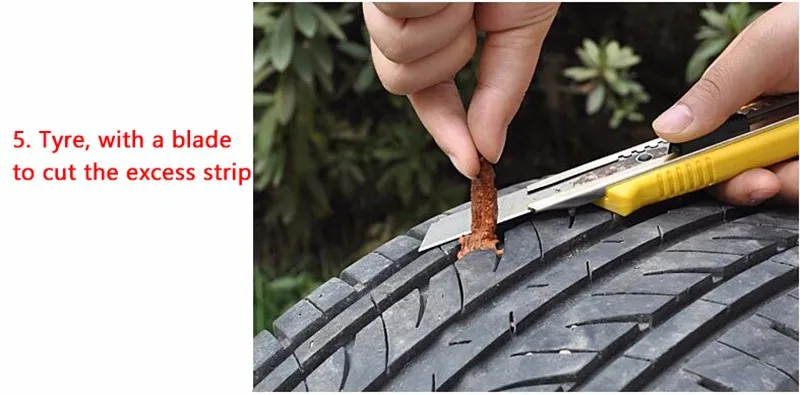
Edit : In case your tyre forms a bulge at that particular area , I would consider replacing it definitely.
As long as it does not go so deep as to get into the sidewall plies stuff like that is usually OK stick it back on there with some super glue and drive on it for a while then check it look at it spray soapy water on it if nothing's wrong she's good to drive on till the tire is rotted our worn.
I had a about a 1/2" tear on the outer wall of a brand new tire.The rim had a scratch, thinking a a curb cut the flap of rubber. Used Gorilla super glue, using latex gloves, squirted a dab of glue into cut, pressed the rubber together. Excess glue created a seal around the cut. Tire looks new, flap is secure. Got lucky the tire wasn't cut deeper so no air leak. I'm sure rubber cement would also do the trick or any rubber sealant. The super glue is very quick. I'll keep an eye on it, but appears to be a solid fix
There is a video that shows you how to repair your sidewall damaged tire . Here is the link https://youtu.be/VFz-Lr5GUd8
Here is the link https://youtu.be/VFz-Lr5GUd8
1
You may have had a flat tire before, brought in into a repair shop to have it fixed, and been told that it needed to be replaced. If you’ve ever wondered what makes a tire non-repairable, Blain’s Farm & Fleet has your answers. We’re here to help you figure out if your tire should be repaired, or if you should look for new tires for sale.
How To Know if Your Tire is Not RepairableIf you get a flat tire, or your tire has experienced damage, you need to know if it can be repaired or replaced. At Blain’s Farm & Fleet, we can repair your tire or, if needed, help you find the best new tires for sale.If you run over a nail or other road debris and it punctures your tire, there is a specific area of the tire where a repair is possible. This area is on the tread face of the tire, between the outermost circumferential grooves (grooves that wrap all the way around the tire). Or, on tires with tread patterns that don’t have circumferential grooves, no closer than 2 inches to where the shoulder meets the sidewall. Also, puncture repairs are limited to holes of 1/4″ or less in diameter. Cuts are not repairable if they are deep enough to have cut into one of the steel belts inside of your tire.
This area is on the tread face of the tire, between the outermost circumferential grooves (grooves that wrap all the way around the tire). Or, on tires with tread patterns that don’t have circumferential grooves, no closer than 2 inches to where the shoulder meets the sidewall. Also, puncture repairs are limited to holes of 1/4″ or less in diameter. Cuts are not repairable if they are deep enough to have cut into one of the steel belts inside of your tire.
Sidewall puncture: If the puncture is in the sidewall of your tire, you need to replace it. If you were to repair it, you would run the risk of the tire repair failing. This is because the sidewall of a tire flexes so much as you drive. A tire plug or patch can work its way loose after so many repeated flexes. Also, the air in your tire is pressing out on its sidewalls under the weight of the vehicle when you drive. Any weak spot on the sidewall of the tire will be attacked by the extreme pressure, and there is a risk of blowout at the spot where the repair was done.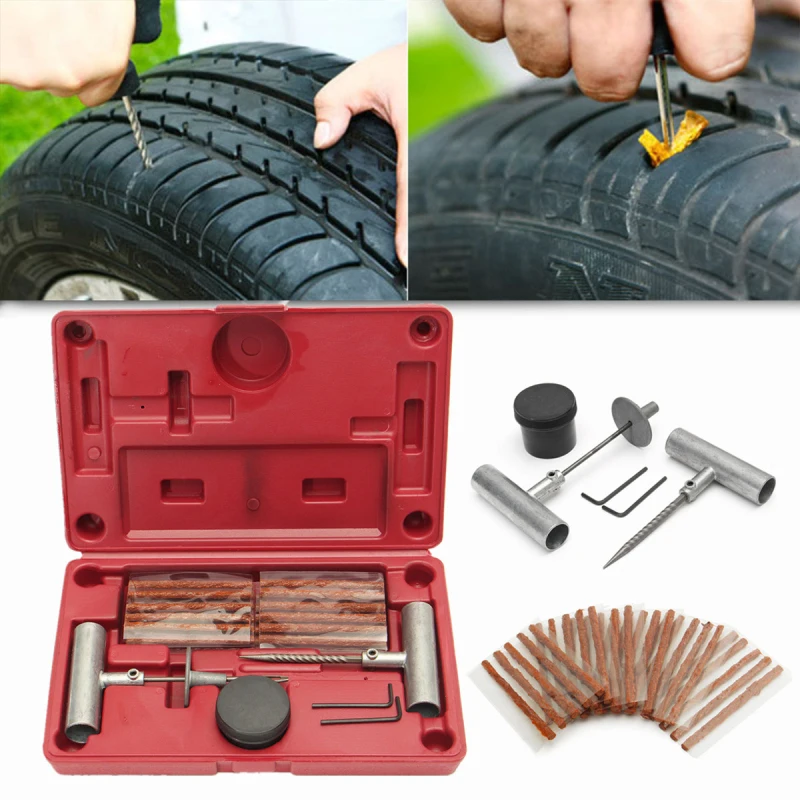
Shoulder puncture: If the puncture is on the shoulder area of the tire, it can’t be repaired. As you drive, the shoulder area of your tire is under the most pressure and flexes the most out of any part of your tire. Also, the curve of the shoulder of your tire makes it difficult for a patch or plug to stay in place there. if you perform a tire repair here, it will likely work its way loose and fail. You risk a blowout by repairing a tire with a shoulder puncture, but not as high a risk as repairing a sidewall puncture.
Cuts and gashes: If you have a cut in your tire, it is likely not repairable unless it is 1/4″ long or less. Cuts can sever the steel cords inside the rubber of your tire that give it its strength. A tire repair in this case would only keep the tire from losing air through the hole, not restore the strength of the tire. It’s also hard for a patch or plug, which is designed to repair a round hole, to effectively repair a cut or gash. If your tire has cuts or gashes, it’s time t look at new tires.
If you drive on a tire that has too low of air pressure, or is flat, you can damage the tire beyond repair. When a tire is driven on low enough air pressure, that part of the sidewall makes contact with the road, the inner liner of the sidewall will wear away and weaken the sidewall of the tire. This damage runs around the entire side of the tire, and cannot be repaired. The initial loss of air pressure might have been caused by a puncture or some other issue that a tire repair shop could have fixed, but driving on a tire with low air pressure will destroy it. Make sure to maintain the correct air pressure in your tires at all times by checking them at least once per month with a tire pressure gauge.
A tire that has been severely damaged in a collision or other impact is not repairable. This includes bulges, tread separation, slipped or broken belts, large cuts or gashes, bead damage, and tires that were knocked off the rim by an impact. If you have a tire with any of these problems, you must replace it.
If you have a tire with any of these problems, you must replace it.
When dealing with a borderline tire repair, it’s better to play it safe by replacing the tire. If your tire is in a condition that is at the edge of the line between being repairable and not repairable, and you have an option between repair and replacement, replacement is the safer choice. Any risk of a tire blowout is not worth taking.
If you need a tire repair, or would like to have your tires inspected by a professional auto mechanic, bring your vehicle to the tire repair shop at your local Blain’s Farm & Fleet. We offer free tire inspections, and if you purchased your tires from us with our Road Hazard Protection plan, we will also repair your tire for free. Call 1-800-365-9936 to schedule an appointment at your tire repair shop or you can request a quote online.
If your tire is damaged beyond repair, check out our Tire Replacement Guide to figure out whether you need to replace one, two, or four tires. Browse through our current advertisements for an ongoing tire sale. Plus, you can look up tires for sale with our online tire lookup feature. Enter the make, model, and year of your vehicle to be matched up with the correct size tires.
Browse through our current advertisements for an ongoing tire sale. Plus, you can look up tires for sale with our online tire lookup feature. Enter the make, model, and year of your vehicle to be matched up with the correct size tires.
Posted in: AutomotiveTagged: Auto Repair, Automotive Tires, Automotive Troubleshooting, DIY Car Inspection, Tire Maintenance
Damage of any kind can result in negative consequences that affect driving safety and road holding. And if the majority of punctures can be repaired in the service or repaired by oneself, then the side cut of the tire often forces one to resort to a complete tire replacement. Riding on damaged tires in the usual mode is extremely dangerous. How to fix a tire so that you can ride comfortably without consequences, and is it possible to seal or repair a cut tire? We will answer these and other relevant questions for motorists in this material.
How to fix a tire so that you can ride comfortably without consequences, and is it possible to seal or repair a cut tire? We will answer these and other relevant questions for motorists in this material.
Modern services can repair a tire after a front or side puncture. You can repair a tire, thanks to the universal set of a motorist, with your own hands. It is enough to seal the hole with a special tourniquet.
Is this type of damage dangerous and should it be replaced? Only the master can unambiguously answer the question, having studied the lateral damage. The specialist will determine the nature of the puncture that needs to be repaired and offer a complete tire replacement or repair. It is inexpedient and dangerous to close up a large puncture, due to which the tire is deformed.
To determine how to repair a side cut, you need to study the type of damage:
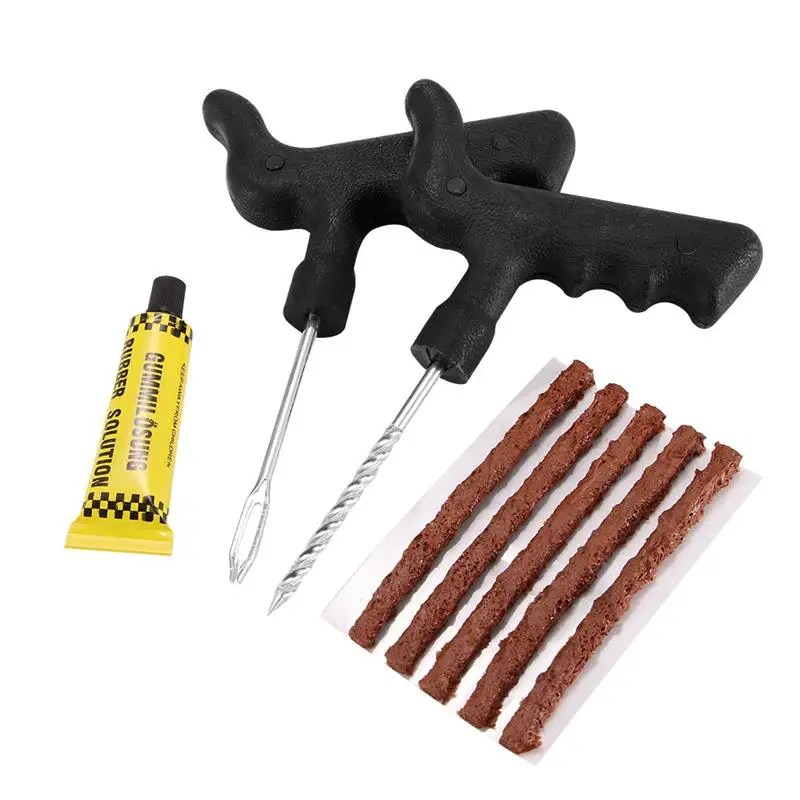
Sealing a cut on a tire is much more difficult than a normal repair, so it is often necessary to perform an involuntary replacement of tires. Repairing the wheel is impossible due to side wires and threads that break under side load. Taping and repairing lateral damage will not help repair the threads. Any obstacle or potential contact with a bump at high speed will have the adverse effect of bursting the tire due to the load, resulting in a dangerous loss of control.
A side puncture is less dangerous than a longitudinal cut. However, not every defect requires replacement. Masters will be able to repair tires if the deformed area placed along the carcass threads does not exceed 50 mm. The possibility of repair is also available if the side cut located across the tire threads is less than 30 mm.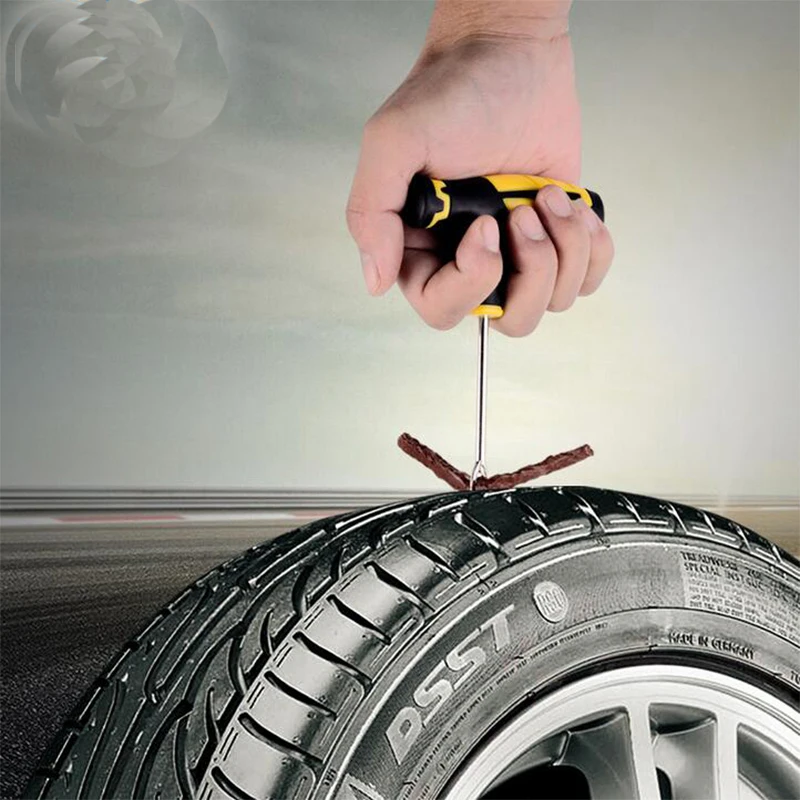 However, we do not recommend doing repairs in this case with your own hands. To preserve the protective properties and avoid possible negative consequences, it is necessary to use professional equipment.
However, we do not recommend doing repairs in this case with your own hands. To preserve the protective properties and avoid possible negative consequences, it is necessary to use professional equipment.
Should cuts be repaired? A popular question for motorists who are faced with a choice is whether to seal a defect or replace a wheel. The possible consequences of cuts scare car owners, but do-it-yourself repairs are more attractive because they are cheaper than buying fresh tires.
To avoid dangerous consequences, sealing small and large side cuts is prohibited if you need to repair more than 10 cords and close up a hole larger than 30 mm. It is possible to repair tires for passenger cars with a side cut of the tire if it is a shallow scratch.
Driving with a cut in a tire is not safe. The degree of risk depends on the nature of the damage and the experience of the specialist who will seal the seam. Before sealing the hole with your own hands or entrusting a restoration to a specialist, you should examine the lateral damage.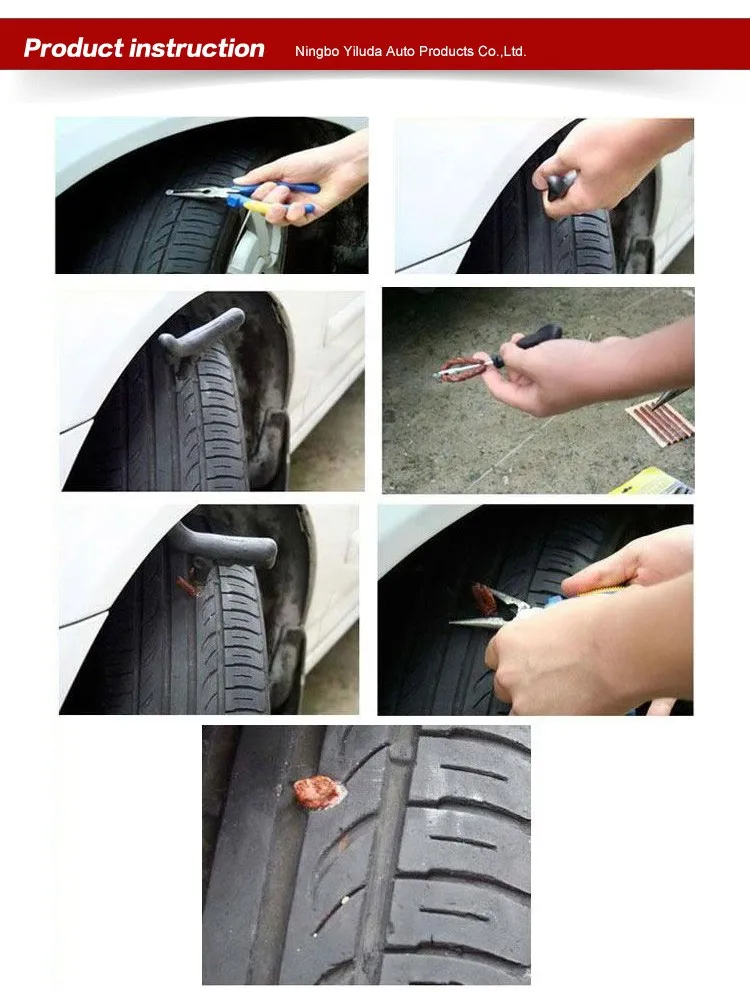 Manufacturers recommend replacing tires if it is necessary to seal 20 mm or more. However, if it is possible to change a wheel, the opportunity should be taken as soon as possible. Since even a small defect is dangerous during the trip. During operation, a hernia is formed, which explodes if timely replacement is not made. If you drive on a tire with a side cut for a long time and do not do repairs in the service or with your own hands, there is a high risk of getting into an accident.
Manufacturers recommend replacing tires if it is necessary to seal 20 mm or more. However, if it is possible to change a wheel, the opportunity should be taken as soon as possible. Since even a small defect is dangerous during the trip. During operation, a hernia is formed, which explodes if timely replacement is not made. If you drive on a tire with a side cut for a long time and do not do repairs in the service or with your own hands, there is a high risk of getting into an accident.
In order to strengthen the structure of tires, manufacturers add several layers of metal cord to models. Also on the market there is a fabric cord, which includes fibers from nylon, which allows you to increase the strength of rubber. Therefore, in order to seal the tire in the service or repair it yourself in case of a puncture, it is necessary to use high-quality materials. If the recommendations for replacement are not followed, there is a high risk of dangerous and unpredictable consequences.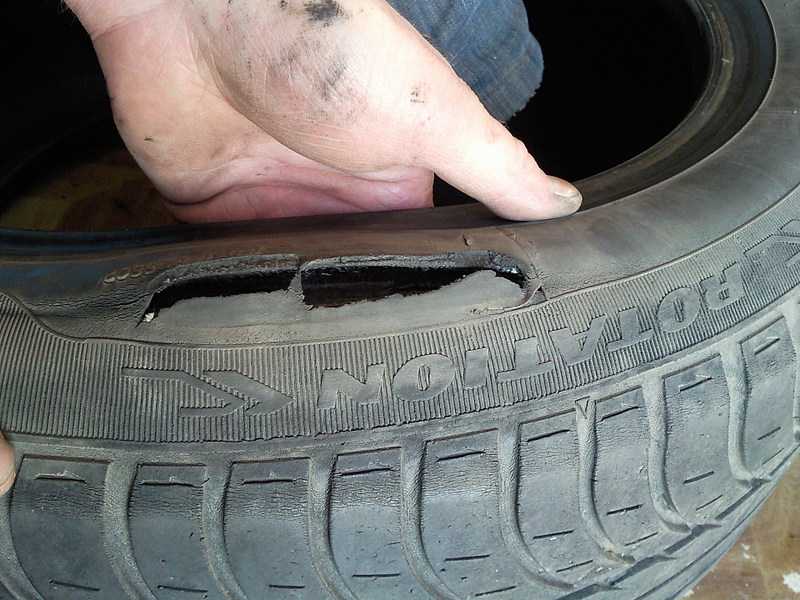
Summer Drive Protection Sound Comfort
Rating:
4.5
Tires Goodyear Eagle F1 Asymmetric 3 SUV
Summer Drive protection
Rating:
4.5
Tires Goodyear Eagle Sport TZ
Summer Drive protection
Rating:
4.5
Tires Goodyear EfficientGrip 2 SUV
Summer Drive Protection Run On Flat
Rating:
4.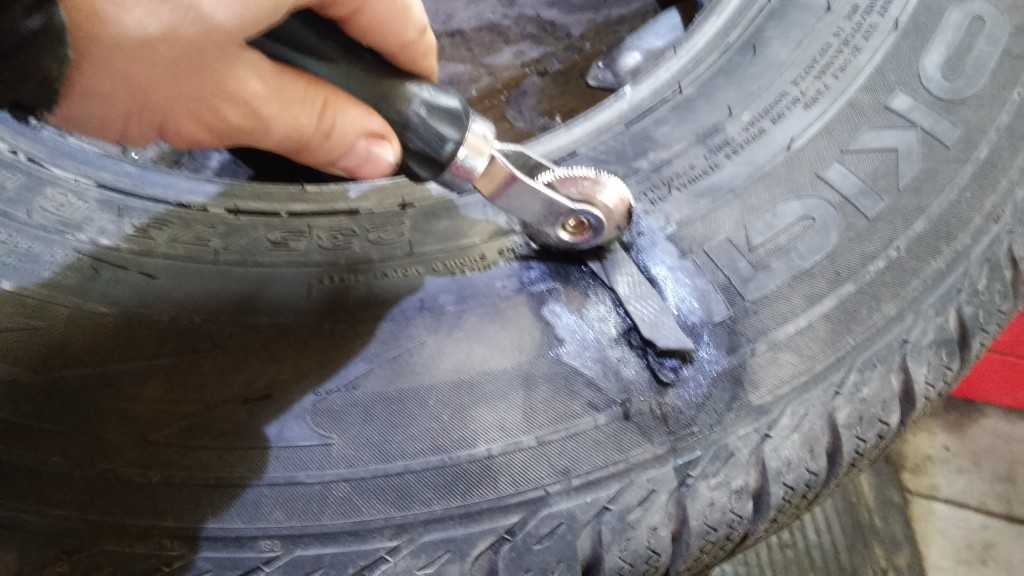 5
5
Tires Goodyear EfficientGrip Performance
Winter Drive protection
Tires Goodyear UltraGrip Arctic 2 SUV
Winter Drive Protection Sound Comfort
Rating:
4.5
Tires Goodyear UltraGrip Ice 2
Winter Drive Protection Sound Comfort
Rating:
4.5
Tires Goodyear UltraGrip Ice SUV
Winter Drive protection
Tires Goodyear UltraGrip Performance+ SUV
All season Drive protection
Rating:
5
Tires Goodyear Vector 4Seasons Gen-3 SUV
Summer Drive Protection Run On Flat
Rating:
4
Tires Goodyear Wrangler HP All Weather
All season Drive protection
Rating:
4.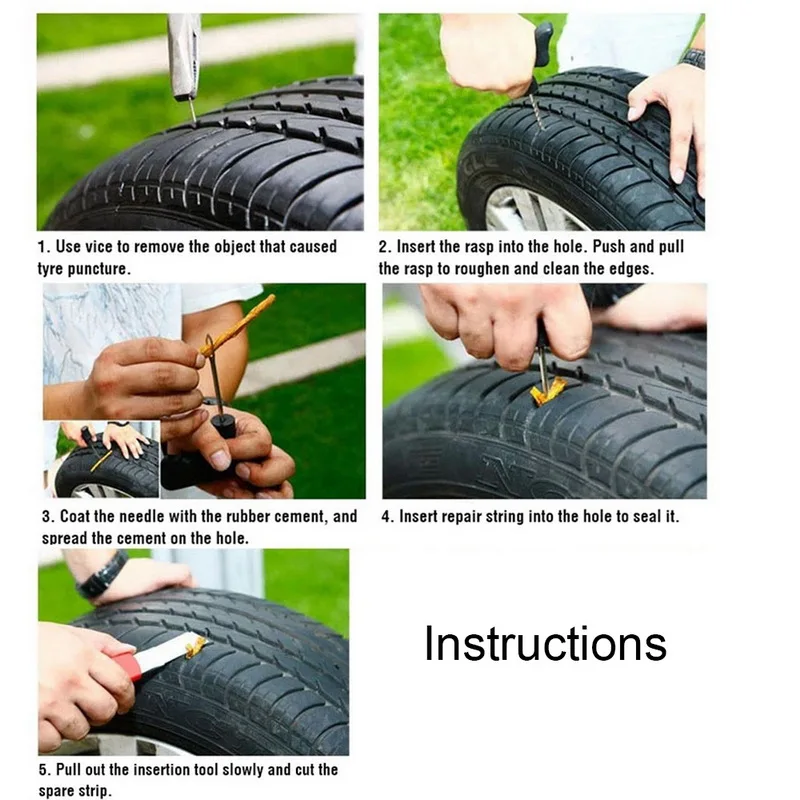 5
5
Tires Goodyear Vector 4Seasons
Summer
Rating:
4.5
Tires Goodyear Wrangler All-Terrain Adventure with Kevlar
Summer Drive protection
Rating:
4.5
Tires Goodyear EfficientGrip SUV
Summer Drive Protection Run On Flat
Rating:
4
Tires Goodyear Eagle F1 Asymmetric SUV
In order to reliably assess the consequences of tire deformation, before repairing the tire, contact a specialized center.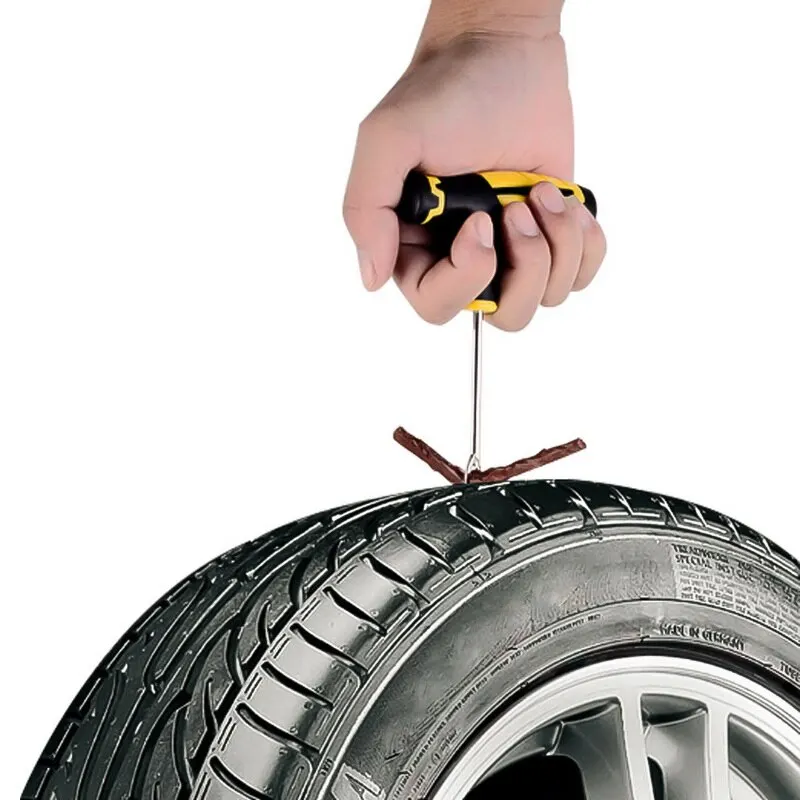 The masters will figure out whether it is possible to continue driving a car or whether it is worth replacing the rubber. The main inspection criterion is the width of the seam that needs to be repaired. It should be borne in mind that it is dangerous to close up and seal holes with a width of more than 40 mm with rubber mixtures.
The masters will figure out whether it is possible to continue driving a car or whether it is worth replacing the rubber. The main inspection criterion is the width of the seam that needs to be repaired. It should be borne in mind that it is dangerous to close up and seal holes with a width of more than 40 mm with rubber mixtures.
If the masters decide to restore the tire and make a patch, then the restoration process includes the following steps:
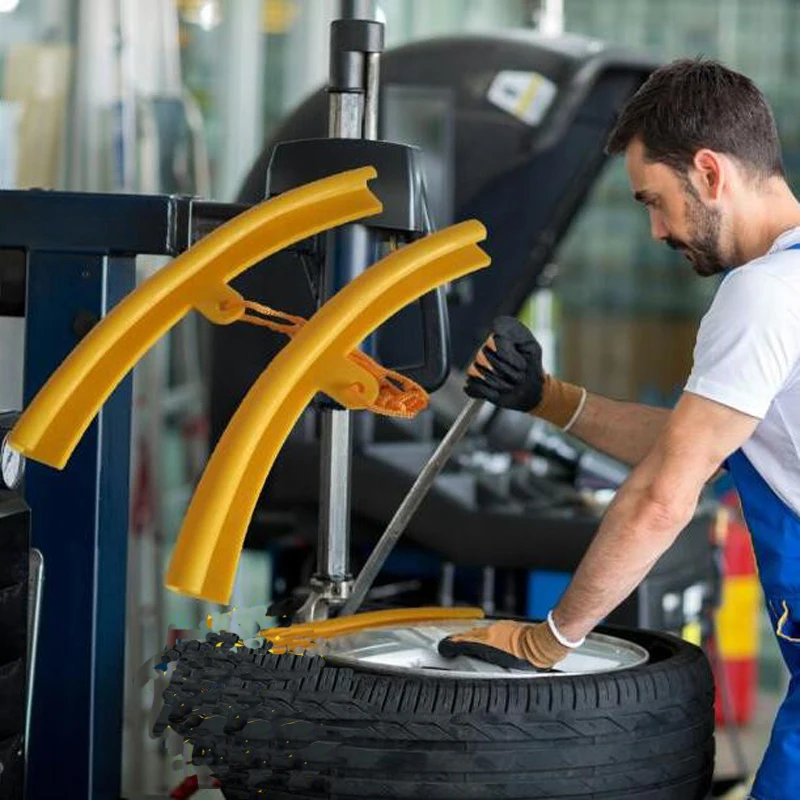
The decision to patch should be made by experienced professionals who will be able to advise whether to patch or replace tires. Restoration of rubber, despite the observance of technology, cannot restore the original properties of the carcass, so you should drive carefully on such rubber.
It is also worth considering that if you do the restoration of a tire, it is necessary to break in before active operation. To avoid negative consequences, we do not recommend moving at high speeds.
It is often cheaper to repair a side cut than to buy a new tire.
One step tire repair process.
Cut before repair.
Cut in the sidewall of a 35 mm tire.
Repair process.
Stripping and gluing the patch. Filling with raw rubber. Installation on a vulcanizer.
Refurbished.
Tire after repair quality test.
Many car enthusiasts are hesitant to repair a damaged tire or buy a new one. Leave this decision to professionals who know everything about tires, inspect the damage and give an opinion on the feasibility of repair work. Based on this information, you will make a decision.
Leave this decision to professionals who know everything about tires, inspect the damage and give an opinion on the feasibility of repair work. Based on this information, you will make a decision.
The full range of repairs of the puncture includes:
However, it is worth remembering that the new rubber is not cheap, and the repairs performed in full repairs are repairs side cuts of tires, the price of which is quite insignificant, in accordance with the technological map, it can extend the life of your wheel until it is completely worn out.
There are only three of them: simple, U - shaped, L - shaped.
Simple cut
Basic cut. Often caused by a knife
L-shaped cut
Often caused by running over a sharp curb or spike.
U-shaped
Appears due to a cut with a knife or collision with a sharp object.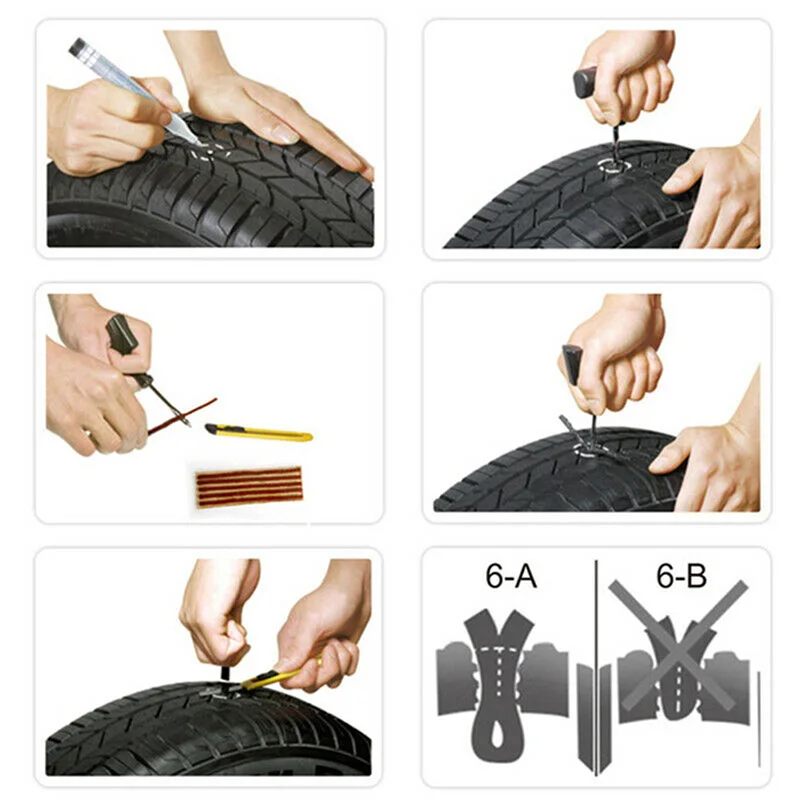
It happens that the size of the cuts is beyond repairable dimensions or located in non-repairable areas of the tire.
“
Tires are the only element that connects you to the road. In its laboratories, TECH has been and is testing repaired tires around the clock and as a result has deduced which cuts can be repaired safely, and which cuts are at risk of explosion. The result of their work was a table and recommendations on the size of cuts to be repaired and where they can be located on the tire.
Komchenkov Oleg, leading mechanic
Cut too wide.
The maximum cut width that can be repaired is 25 mm. This is due to the fact that the cord threads in the tire are perpendicular to the disk, and with such damage, a large number of threads are damaged.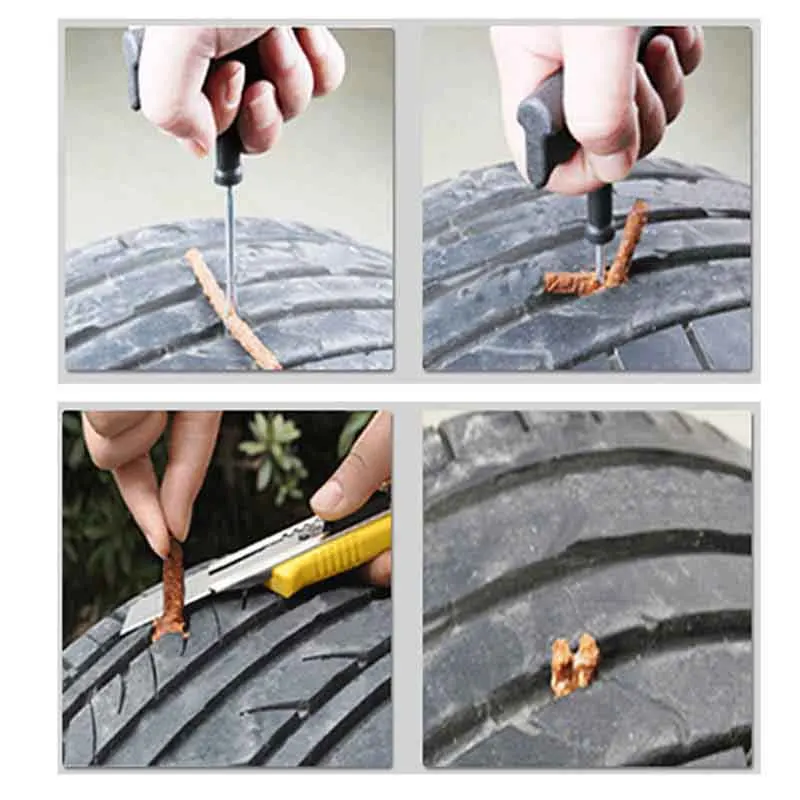
Cut too long
Maximum length of cut that can be repaired is 60 mm. When repairing a longer length, the tire may break while driving.
Such a cut is not so bad, because a few cords are damaged.
Large diameter cut in the tread area.
The maximum cut diameter that can be repaired is 40 mm. A larger cut in the tread area causes the tire to bulge and vibrate when driving.
Cut in non repair area.
Any damage to the rim/tire attachment point (bead ring) cannot be repaired. Since this place carries the maximum load in the tire. A repair at this location will cause the tire to burst in motion.
One-step side cut repair.
The main stages of repair.
Looking for a cut
Spilling the entire tire with a special liquid. when in contact with compressed air, the liquid begins to foam.
Marking the surface
Marking the puncture area and the surface to be processed.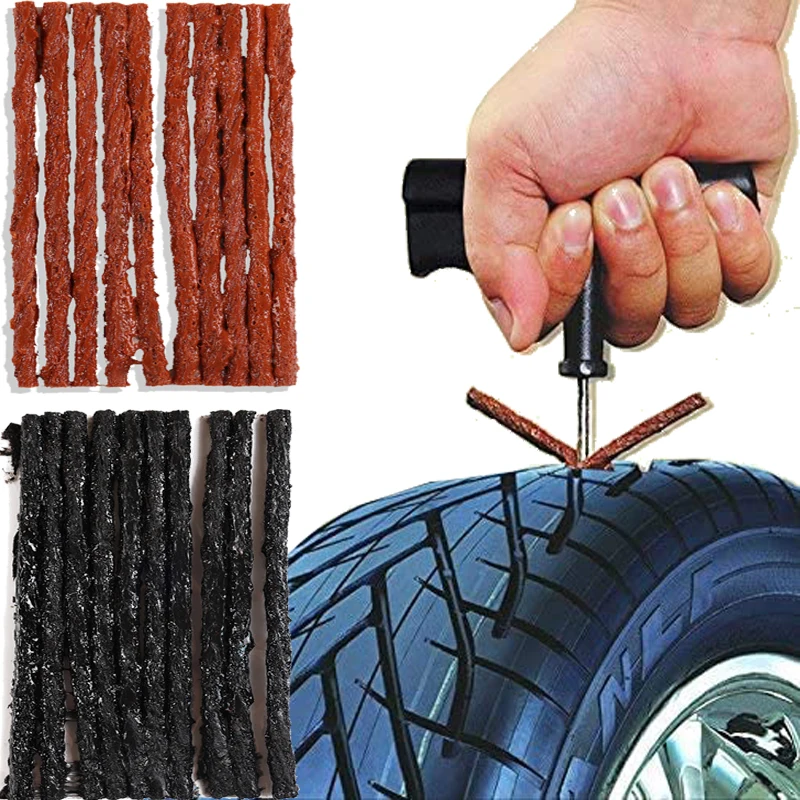
Preparing the inner surface
We clean the inner side of the tire from the stiffeners. We make the necessary surface roughness.
The hot curing procedure should be carried out in the following order:
A tire with a side cut is washed off dirt and dried thoroughly. If this paragraph is neglected due to negligence or for other reasons, all further actions may not bring the desired result. For the repair to be successful, the tire must be clean and dry.
The next step is to examine the tire for hidden defects. This operation is also mandatory. Some tyres, especially older tyres, may show not only cuts on the sidewall, but also punctures or other damage.
The area to be repaired must then be cleaned. For this, a grinding pneumatic tool with special cutters is used. For tire restoration to be successful, you need to responsibly approach any nuance. The tire is cleaned very smoothly so that kinks or drops do not appear on the rubber.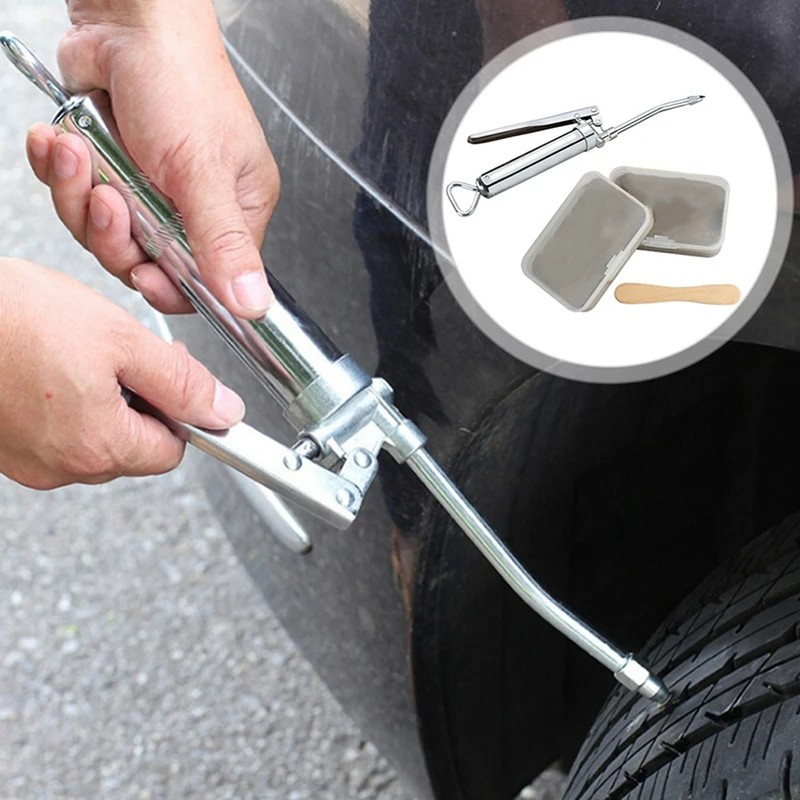 Subsequently, excessive pressure may occur in such places. For stripping, use a machine with a speed of up to 4 thousand revolutions / min.
Subsequently, excessive pressure may occur in such places. For stripping, use a machine with a speed of up to 4 thousand revolutions / min.
Next, the damaged area of the tire is degreased from the inside. Using a scraper, the top layer of rubber is removed, and then the machine is cleaned. Next, the cutter is replaced with a brush, which removes all roughness from the surface. At the end of the procedure, the remnants of rubber crumbs are removed from the tire with a vacuum cleaner.
Preparing the outer surface.
We clean the outer area of the cut. We process the edges of the cut, make a Y-cut.
Apply glue.
Degrease and apply glue to the prepared surface.
Installing the patch.
Install and roll the patch tightly.
The next step is to treat external damage. We apply hot glue, wait for it to dry and cover the area with raw rubber. It should not be either too much or too little. If you apply excess rubber, after the operation is completed, you will have to additionally clean the outside to remove excess.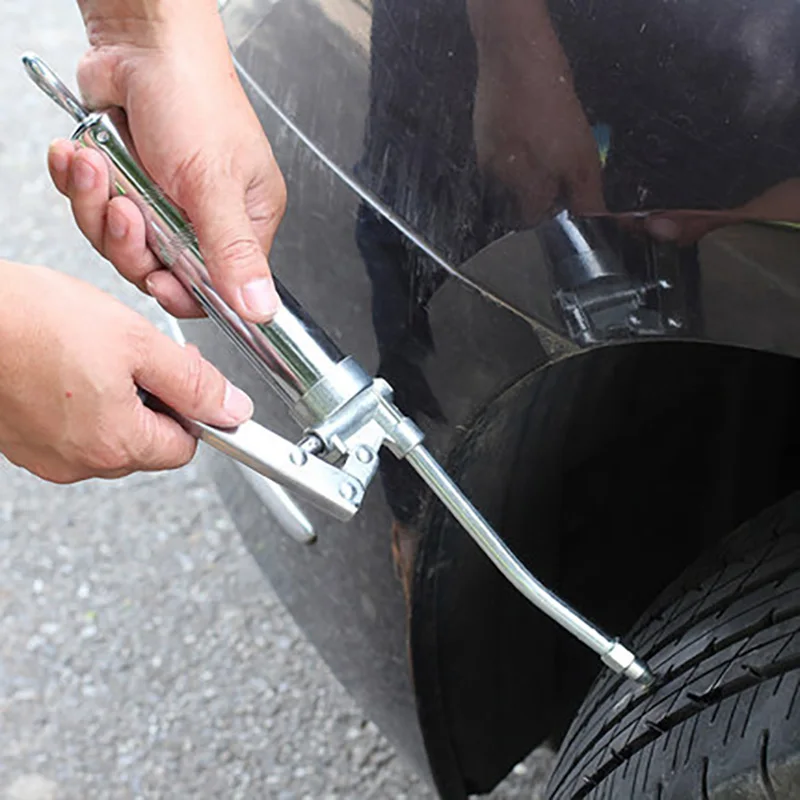 Due to the insufficient amount of rubber during vulcanization, there will not be the necessary pressure, which will adversely affect the quality of the repair.
Due to the insufficient amount of rubber during vulcanization, there will not be the necessary pressure, which will adversely affect the quality of the repair.
Preparation is complete, now you need to choose a patch of a suitable shape and size. The inner surface is covered with several layers of hot melt adhesive. Apply each next layer of glue only after the previous one has dried. Forced drying of the glue is strictly unacceptable. After the last layer has dried, you can glue the thermal patch.
We press raw rubber
We clean and properly process the cut and press raw rubber.
Vulcanization
We count the vulcanization time and put it on the vulcanizer.
Testing
Cool down and inflate the tire to 4 ATM. Testing repairs.
The final stage is the direct vulcanization process. It should be remembered that the tire cannot be removed immediately after the procedure is completed. Cooling should occur gradually, naturally. Only in this case the quality of restoration work will be high enough.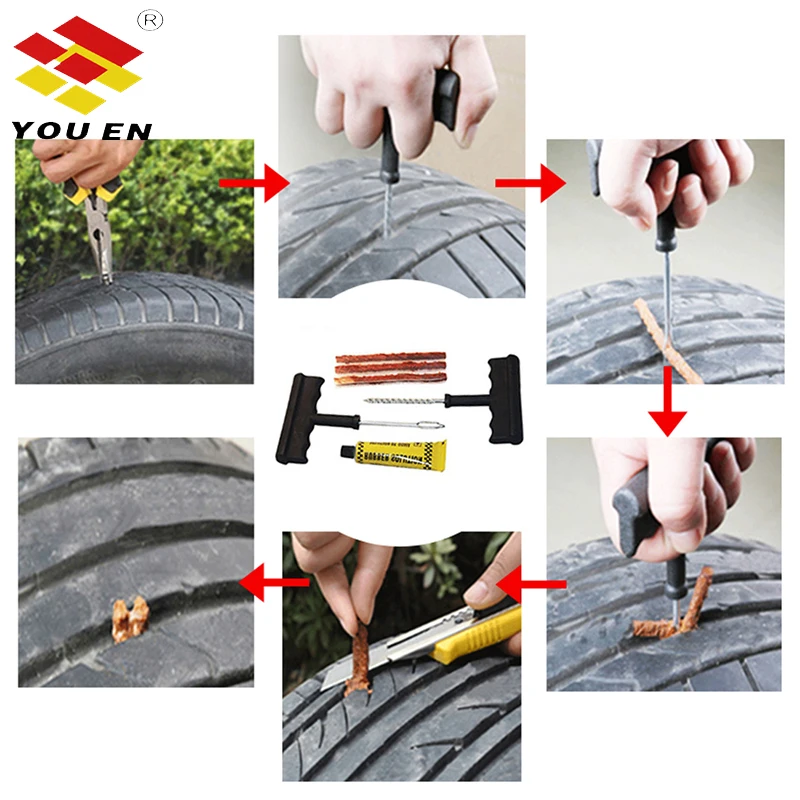
Not every tire shop can vouch for the quality of their work. The specialists of our company strictly adhere to all technological requirements. That is why we provide a guarantee for any repair carried out in our workshop.
Subject to all the nuances of the technology, the strength and reliability of the resulting connection is beyond doubt. However, this method also has disadvantages. There are cases when, after an unskilled repair, the patch delaminates, and the tire swells or is seriously damaged. If you don't want to throw away a tire that has delaminated after retreading, it's best to deal with the professionals.
Hot vulcanization comes to the rescue not only in cases where the problem of a side cut on a tire needs to be solved. This method is also effective in the restoration of conveyor belts. Vulcanization occurs according to the same principle that is used in the manufacture of a conveyor belt, and the resulting joint is practically not inferior in strength to the whole belt.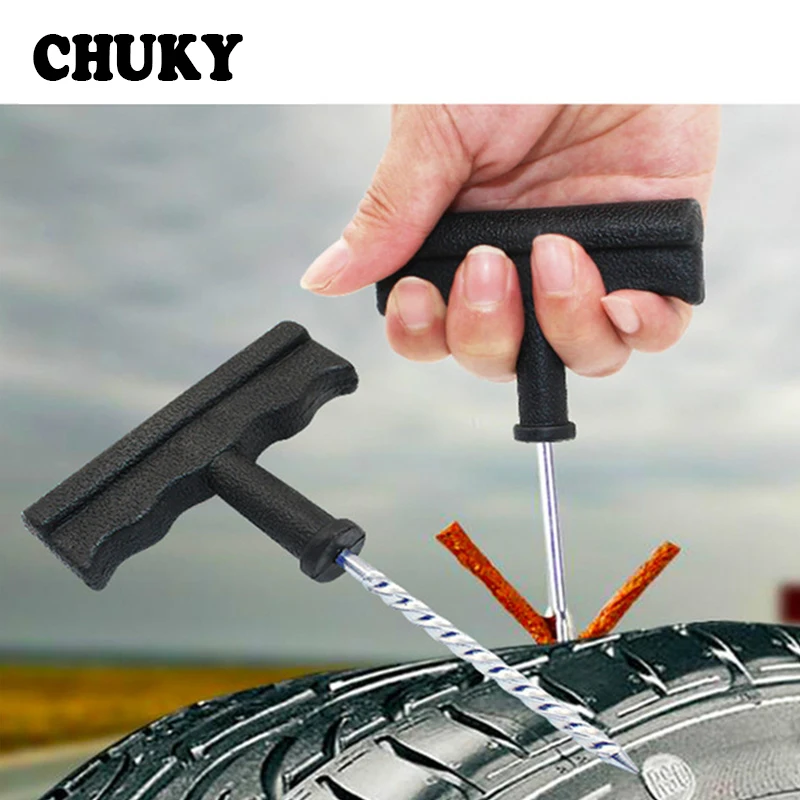
A competent craftsman will assess the severity of the damage even before the start of repair work.
In case of damage to tires of any nature, mobile tire fitting can eliminate these damages right at the scene of the accident in a short time, because it is equipped with all the required equipment and technically competent personnel. These injuries (most often, punctures or cuts) occur when running over curbs with sharp stones or when falling into a hole of considerable depth at full speed. Previously, tires were carried out only in a stationary workshop, because this damage is technologically very difficult to eliminate. To carry it out, it is necessary to weld the tires using a vulcanizer.
However, it is worth remembering that new tires are not cheap, and a full repair of tire side cuts, the price of which is quite insignificant, in accordance with the technological map, can extend the life of your wheel to complete wear. Such a wheel is successfully balanced and your suspension will not suffer. Repaired tires must be installed strictly on the rear axle of the car and the driver must control the level of pressure in it.
Repaired tires must be installed strictly on the rear axle of the car and the driver must control the level of pressure in it.
If you consider yourself a thrill-seeker on the road, changing a tire is highly recommended. All the same, cuts on the tire are a serious matter.
R 13-16
Full range of works.
from 3000₽
Repair
R 17-18 9002 Full complex of works
from 3500₽
from 4000 rubles
Repair the side cut of the tire R 15
shows the main stages of cutting of the cut on the tire R 15 9000
as we are working?
Contact us
By phone or leave a request on the website.